Loading
Archives of Gastroenterology Research
ISSN: 2692-5427
All Articles
Archives of Gastroenterology Research: A Message from Prof. Dr. Rolf Teschke (Editor-in-Chief)
Rolf Teschke
As the new editor-in-chief of Archives of Gastroenterology Research (AGR) I cordially welcome all current readers of AGR and future contributors to AGR. Together with my editorial team of AGR we encourage scientists and clinicians involved in the care of patients with gastrointestinal diseases to submit their interesting reports to AGR with the aim to be published following fair evaluation by external peer reviewers
Arch Gastroenterol Res, 2021, Volume Volume 2, Issue Issue 2, p0-74 | DOI: 10.33696/Gastroenterology.2.030
Hepatitis Treatment in the Last 20 Years: A Short Review
Abdurrahman Sagir
The hepatitis C virus (HCV) genome was isolated during the late 1980s using molecular cloning techniques. It is recognized as the cause of most cases of percutaneously transmitted non-A, non-B hepatitis. It is estimated, that up to 200 million people worldwide are infected with the hepatitis C virus (HCV), more than 3% of the world population. The predominant risk factors for HCV are intravenous drug use, tattoos, exposure to blood products, occupational risk and ethnicity.
Arch Gastroenterol Res, 2020, Volume Volume 1, Issue Issue 1, p1-3 | DOI: 10.33696/Gastroenterology.1.001
Neurofibromatosis Type 1 and Crohn’s Disease Association: Case Report
Aamir AlShahrabally, D Coghlan, S Quinn
We described a 15-year-old- a boy who presented with neurofibromatosis type 1 and Crohn’s disease. Neurofibromatosis 1 (NF1) is the most common form of NF, affecting 1 in 3000 individuals. Crohn’s disease is one of the inflammatory bowel diseases. Its incidence is significantly rising in Ireland. Concomitant association of NF1 and Crohn’s disease is a rare finding. This is the first case reported in the paediatric population.
Arch Gastroenterol Res, 2023, Volume Volume 4, Issue Issue 1, p1-3 | DOI: 10.33696/Gastroenterology.4.041
Gastrointestinal Reflux Related Aspiration (GRASP) and Airway Injury after Lung Transplantation: Insights into Pathophysiology and Role of Airway Biomarkers for Risk Stratification
Miguel M. Leiva-Juarez, MD, MSE, Frank D’Ovidio, MD, PhD
Lung transplantation remains the only long term treatment for end-stage pulmonary disease. The main limitation to allograft survival beyond the first year post transplant is development of chronic lung allograft dysfunction (CLAD). Among survivors, CLAD will develop in virtually all recipients and often will show signs of airway injury before any clinical manifestations appear. There is currently no specific treatment available and management depends largely on modification of risk factors. Recent efforts by our group and others have focused on understanding the underlying pathophysiology and development of clinical biomarkers to diagnose CLAD early and allow risk stratification before irreversible allograft injury.
Arch Gastroenterol Res, 2025, Volume Volume 6, Issue Issue 1, p1-7 | DOI: 10.33696/Gastroenterology.6.058
Gastrointestinal Manifestations of COVID-19: An Overview
Ronaldo Teixeira da Silva Jr, Glauber Rocha Lima Araújo, Hanna Santos Marques, Jéssica Oliveira de Souza Nascimento, Fernanda de Santana Rabelo, Ângela Reis Teixeira, Thanilly Silveira Macedo, Daniel Bastos Alves Lima, Fernanda Santos Mota, Raíssa Frazão Campos, Isabella Oliveira Bezerra, Railan Pessoa Silva, Larissa Alves Fernandes, Maria Luísa Cordeiro Santos, Fabrício Freire de Melo
The Coronavirus disease 2019 (COVID-19) is an infectious disease caused by the new coronavirus of severe acute respiratory syndrome 2 (SARS-CoV-2), single-stranded, positive sense, spherical RNA virus with spikes protein that protrude on its surface giving the appearance of a crown, from the Latin corona. It belongs to the large family of coronaviruses (CoVs) and the genus β-coronavirus. COVID-19 can involve manifestations in the respiratory system, as well as other biological systems, as a intestinal.
Arch Gastroenterol Res, 2021, Volume Volume 2, Issue Issue 1, p1-8 | DOI: 10.33696/Gastroenterology.2.021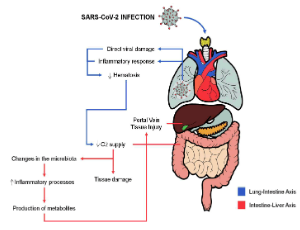
Oral Lactulose – A Safe and Effective Strategy for the Management of Constipation in Individuals with Impaired Glucose Tolerance and Diabetes
Valentin Faerber, Katharina Stefanie Kuhn, Eva Svehlikova, Angelika Kuchinka-Koch, Thomas R Pieber
Lactulose, either as crystals or liquid syrup, is a frequently prescribed osmotic laxative agent in patients with diabetes mellitus (DM). During the manufacturing process, carbohydrate impurities can arise which could increase blood glucose levels with a possible impact on glycemic control. This important issue has now been addressed for the first time in individuals with type 2 DM. A recent RCT confirmed that there is no need to consider carbohydrate impurities in oral lactulose products administered at the recommended doses of 20 g/day and 30 g/day for blood glucose management.
Arch Gastroenterol Res, 2022, Volume Volume 3, Issue Issue 1, p1-8 | DOI: 10.33696/Gastroenterology.3.036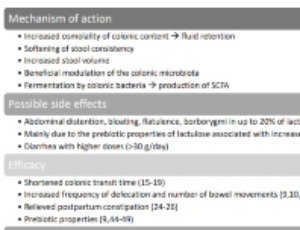
Optical Insights into Fibrotic Livers: Applications of Near-Infrared Spectroscopy and Machine Learning
Tamer A. Addissouky, Ibrahim El Tantawy El Sayed, Majeed M. A. Ali, Mahmood Hasen Shuhata Alubiady
Liver fibrosis staging is critical for patient selection and management prior to transplantation, but biopsy is invasive and serum biomarkers lack accuracy. Near-infrared spectroscopy (NIRS) is an emerging non-invasive technology that can detect liver fibrosis via changes in tissue composition. Machine learning (ML) enables analysis of NIRS data for diagnostic modeling.
Arch Gastroenterol Res, 2024, Volume Volume 5, Issue Issue 1, p1-10 | DOI: 10.33696/Gastroenterology.5.048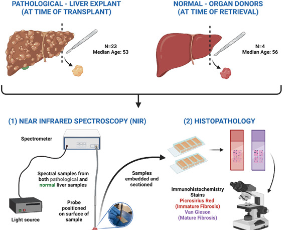
DILI, HILI, RUCAM Algorithm, and AI, the Artificial Intelligence: Provocative issues, Progress, and Proposals
Rolf Teschke
Artificial Intelligence (AI) principles published in 1956 included the recommendation to use algorithms for solving complex processes. The creation of the Roussel Uclaf Causality Assessment Method (RUCAM) was published in 1993 with integration of an intelligent algorithm to solve issues of causality assessment in cases of complex suspected drug induced liver injury (DILI) cases. Other causality assessment methods (CAMs) published before the era of AI and RUCAM followed rather general principles without precise and valid algorithm.
Arch Gastroenterol Res, 2020, Volume Volume 1, Issue Issue 1, p4-11 | DOI: 10.33696/Gastroenterology.1.002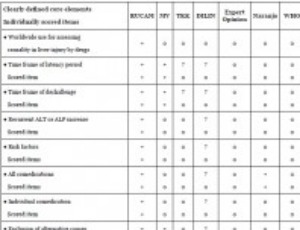
Exploring the Use of Point of Care Ultrasound in Screening for Non-Alcoholic Fatty Liver Disease: A Systematic Literature Review and Meta-Analysis
Oscar L. Hernandez, Zoilo Karim Suarez Yeb, Talwinder Nagi, Muhammad Adnan Haider, Charles Vallejo, Fatima Ahson
Non-alcoholic fatty liver disease (NAFLD) is a major cause of cirrhosis and liver failure globally. Despite its broad impact, screening recommendations for NAFLD remain varied based between gastrointestinal societies. Point of care ultrasound (POCUS) has emerged as a new form of screening and diagnosing intrabdominal pathologies including NAFLD. We aimed to estimate the effectiveness of POCUS in screening for NAFLD
Arch Gastroenterol Res, 2023, Volume Volume 4, Issue Issue 1, p4-11 | DOI: 10.33696/Gastroenterology.4.042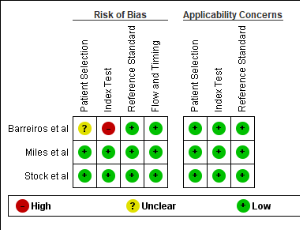
Disease Resolution after Cessation of Treatment in Patients with Eosinophilic Esophagitis
Qian Yuan, Jonathan N. Glickman, Wayne G. Shreffler
Eosinophilic esophagitis (EoE) is a chronic inflammatory condition of the esophagus. EoE is triggered in most patients by dietary allergens and mediated by type 2 immune responses. Over the past 3 decades, substantial progresses have been made in understanding EoE pathogenesis, management, and natural history. EoE affects children and adults, and the incidence and prevalence have increased over time. Untreated EoE can lead to severe complications including food impaction, small caliber esophagus, esophageal stricture, and esophageal perforation.
Arch Gastroenterol Res, 2025, Volume Volume 6, Issue Issue 1, p8-12 | DOI: 10.33696/Gastroenterology.6.059
Gastric GIST with 13 kg in Asymptomatic Patient: A Rare Case of Giant GIST and Literature Review
Flávio Silano, Ricardo Bandeira de Melo Amaral, Vanessa Costa Neves, Rodolfo Carvalho Santana, Paulo Cezar Galvão do Amaral
Although gastrointestinal stromal tumors, GISTs, are the most common neoplasms arising from the gastrointestinal mesenchyme, they represent less than 1% of all digestive tumors. Its incidence has increased in recent years, probably due to improved diagnostic methods. It is currently known that GIST is the most common sarcoma. It originates from interstitial cells of Cajal and depends on the transcription factor ETV-1. These are neoplasms associated with molecular alterations and some mutations.
Arch Gastroenterol Res, 2022, Volume Volume 3, Issue Issue 1, p9-17 | DOI: 10.33696/Gastroenterology.3.037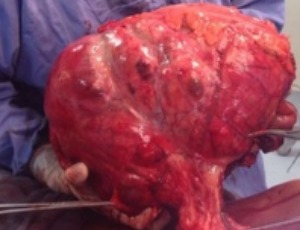
Alcoholic Liver Disease and the co-triggering Role of MEOS with Its CYP 2E1 Catalytic Cycle and ROS
Rolf Teschke, Manuela G. Neuman, Suthat Liangpunsakul, Helmut-Karl Seitz
Until the early sixties, the concept prevailed that alcoholic liver disease (ALD), also termed alcohol-related liver disease (ARLD), results from malnutrition commonly observed among individuals consuming chronically high amounts of alcohol rather than being causally related to the use of alcoholic beverages. However, the malnutrition concept became a matter of debate because of the clinical observation that humans, even on a normal diet and without signs of underweight or malnutrition
Arch Gastroenterol Res, 2021, Volume Volume 2, Issue Issue 1, p9-25 | DOI: 10.33696/Gastroenterology.2.022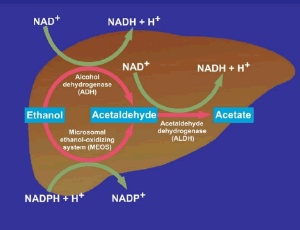
Colonic Granular Cell Tumor
Yong-Xin Yang, Wei Liu
A 42-year-old asymptomatic woman presented for routine health checkup. Abdominal examination was unremarkable. The laboratory tests were normal. The chest radiograph, upper gastrointestinal endoscopy and abdominal computed tomography showed no abnormal findings. A colonoscopy was performed. A hepatic flexure polypoid mass (8 × 8 mm in diameter), covered with normal-appearing mucosa, was identified (Figure 1A).
Arch Gastroenterol Res, 2024, Volume Volume 5, Issue Issue 1, p11-12 | DOI: 10.33696/Gastroenterology.5.049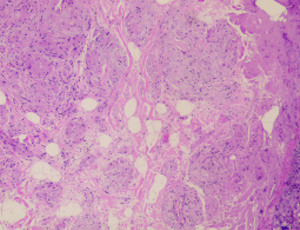
A Rare Endoscopic Finding: Gastric Diverticulum
Yi-Xue Zhou, Qiao-Yun Tong, Wei Liu
A 40-year-old man received upper gastrointestinal endoscopic scan during a health check-up. There was no history suggestive of Helicobacter pylori eradication, reflux esophagitis, peptic ulcer disease and upper abdominal surgery. Endoscopy revealed a wide-mouthed diverticulum of the size of 1.5 × 2 cm between the fundus and greater curvature of the stomach (Figure 1).
Arch Gastroenterol Res, 2023, Volume Volume 4, Issue Issue 1, p12-13 | DOI: 10.33696/Gastroenterology.4.043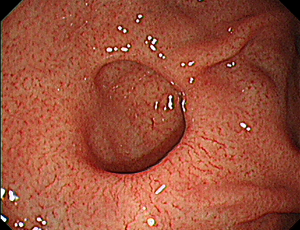
Spontaneous Resolution of Infected Pancreatic Necrosis after Fistulization into Upper Gastrointestinal Tract
Giovanni Valentini, Monica Surace, Silvia Grosso, Anna Maria Serra, Annalisa Vernetto, Laura Sidoli, Dario Mazzucco
We have recently published a case of spontaneous gastric decompression and resolution of an infected walled-off pancreatic necrosis (WOPN). According to the so-called “step-up approach”, which is a staged and multidisciplinary approach for the treatment of necrotizing pancreatitis, we have outlined the need of treating WOPN and their complications according to the clinical course of the patients and not only to radiological and laboratory findings.
Arch Gastroenterol Res, 2020, Volume Volume 1, Issue Issue 1, p12-16 | DOI: 10.33696/Gastroenterology.1.003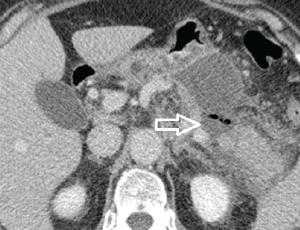
A Case of Carcinoma Ex Pleomorphic Adenoma
Brij Sharma, Vishal Bodh, Rajesh Sharma, Anshul Bhateja
A 50 year old female presented to our institute with complaints of foreign body sensation in oral cavity, the patient was evaluated by ENT department and there was a mass in oropharynx and right tonsillar region, the growth was biopsied and reported as carcinoma ex pleomorphic adenoma. The patient was offered surgical treatment but refused and started on paclitaxel based chemotherapy but the mass continued to grow and it lead to such a point that it was causing occlusion in the nasal cavity as well as oral cavity leading to feeding and breathing difficulty as seen in Figure 1A.
Arch Gastroenterol Res, 2024, Volume Volume 5, Issue Issue 1, p13-14 | DOI: 10.33696/Gastroenterology.5.050
Food Protein-Induced Allergic Proctocolitis (FPIAP): New Insights into Pathogenesis and Implications
Qian Yuan
Food protein induced allergic proctocolitis (FPIAP) is one of the earliest presentations of food allergies in infancy. It is a non-immunoglobulin E (IgE)-mediated condition. Although the inflammation is located at the rectosigmoid colon, clinical symptoms are not limited to mucousy, bloody stools and often include gastroesophageal reflux (GER), feeding difficulties, irritability and poor sleep.
Arch Gastroenterol Res, 2025, Volume Volume 6, Issue Issue 1, p13-18 | DOI: 10.33696/Gastroenterology.6.060
Preclinical Promise and Clinical Challenges for Innovative Therapies Targeting Liver Fibrogenesis
Tamer A. Addissouky, Majeed M. A. Ali, Ibrahim El Tantawy El Sayed, Yuliang Wang, Ayman El Baz, Naglaa Elarabany, Ahmed A. Khalil
Liver fibrosis resulting from chronic liver injury can progress to cirrhosis and liver failure. Current treatments are limited, creating an urgent need for novel antifibrotic therapies. Multiple emerging approaches have shown preclinical promise in inhibiting liver fibrogenesis or stimulating regeneration, including artificial liver support, stem cell therapy, cell/gene therapy, nanomedicines, immunotherapy, and herbal medicines.
Arch Gastroenterol Res, 2023, Volume Volume 4, Issue Issue 1, p14-23 | DOI: 10.33696/Gastroenterology.4.044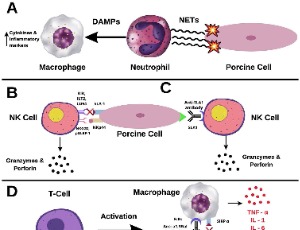
Enhancing Staff Safety in Swallowing Assessment: Insights Post COVID Pandemic
Jennifer Coutinho, Heather Warner, Nwanmegha Young
The COVID-19 pandemic was a time of significant challenge in the healthcare industry. In particular, hospitals worked diligently to develop protocols and guidelines to reduce viral transmission to both patients and staff. Service delivery concerning the instrumental assessment of swallowing evaluation was particularly challenging during the pandemic given the high risk of viral transmission to clinical staff. Clinical algorithms were developed with the goal of implementing a measured return to service delivery while preserving the clinical workforce.
Arch Gastroenterol Res, 2024, Volume Volume 5, Issue Issue 1, p15-20 | DOI: 10.33696/Gastroenterology.5.051
Ultrasounds Importance in the Clinic and Medical Diagnostics
Lydia Ferrara
Ultrasounds are acoustic vibrations that are not perceived by the human ear as their frequency is greater than 20,000 Hz. They are artificially generated by the action of the electric current, whose polarity is periodically reversed, on a quartz crystal, subjecting it, by the action of the electromagnetic field created, to successive contractions and expansions. This alternation of movements generates vibrations, which, transmitted to cellular and intercellular structures, cause collisions and generate heat.
Arch Gastroenterol Res, 2020, Volume Volume 1, Issue Issue 1, p17-21 | DOI: 10.33696/Gastroenterology.1.004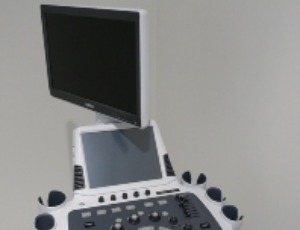
New Trends in Interrelation of Infectious Colorectal Cancer with Intestinal Microbiota
Vishnu P. Tripathi, Daniel Goo, Bokyo N Maidya, M K Aneebuddin
The intestinal microbiota creates a bodily barrier for invading pathogen by using aggressive exclusion. Pathogens and immune cells can interact directly and dynamically with symbiotic bacteria, determining the pathophysiology and outcome of an infection. They can defend the host through a variety of processes, including attachment site occupancy, nutrition intake, metabolite competition, and the synthesis of antimicrobial compounds including bacteriocins that influence pathogen survival (a process referred to as colonization resistance).
Arch Gastroenterol Res, 2022, Volume Volume 3, Issue Issue 1, p18-22 | DOI: 10.33696/Gastroenterology.3.038
norUDCA, a Novel Therapeutic Approach to the Disposal of A1- antitrypsin Mutant Z Proteins
Youcai Tang, Jeffrey H. Teckman
α1-antitrypsin deficiency (AATD) is a well-known genetic disease. No effective medical therapy is currently available for the liver disease. 24-norursodeoxycholic acid (norUDCA) has shown potent anti-cholestatic, anti-inflammatory, and anti-fibrotic properties in experimental and human cholestatic liver diseases. In this minireview, we discuss the role of exogenous norUDCA in reducing accumulation of a1-antitrypsin mutant Z proteins (AATZ) in the livers of PiZ mice and the in vitro model, HTOZ cells.
Arch Gastroenterol Res, 2025, Volume Volume 6, Issue Issue 1, p19-21 | DOI: 10.33696/Gastroenterology.6.061
Enhancing Maternal Health: Cost-effective Alternatives in High Pressure Processing of Fruit Products
Anita Scales-Akwu, Abimbola Allison, Jayashan Adhikari, Monica Henry, Wendelyn Inman
The search for efficacious Alternatives to the Current Standard Procedure in the Food Manufacturing Industry is a public health imperative. Recent advances and rapid adoption of high-pressure processing units in food manufacturing is gaining momentum across various industry sectors. The momentum of industrial importance across various sectors of food manufacturing, has led to requiring extensive microbiological hurdle validation studies for efficacious and feasible utilization of the technology.
Arch Gastroenterol Res, 2024, Volume Volume 5, Issue Issue 1, p21-41 | DOI: 10.33696/Gastroenterology.5.052
The Potential Role of SEPT6 in Liver Fibrosis and Human Hepatocellular Carcinoma
Yuhui Fan, Mei Liu
Liver fibrosis is a reversible wound-healing response in which a variety of cells and factors are involved in and results in excessive deposition of extracellular matrix (ECM). Cirrhosis is one of the significant causes of portal hypertension and end-stage liver disease, and it is the 14th most common cause of death around the world. Approximately 1.03 million people worldwide die from liver cirrhosis every year.
Arch Gastroenterol Res, 2020, Volume Volume 1, Issue Issue 1, p22-25 | DOI: 10.33696/Gastroenterology.1.005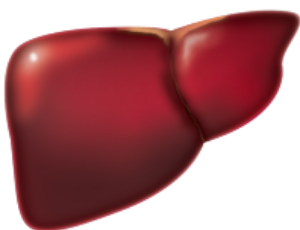
Abdominal Migraine in Children and Adolescents at a Single Tertiary Pediatric Gastroenterology Center: A Twelve-yea Experience on Clinical and Therapeutic Findings
Andréa Souza Hachem, Mary de Assis Carvalho, Gabriela Nascimento Hercos, Juliana Tedesco Dias, Carine Dias Ferreira de Jesus, Nilton Carlos Machado
Observational, retrospective cohort single-center study in consecutive cases of children and adolescents, referred for initial evaluation of chronic abdominal pain at the Pediatric Gastroenterology Outpatient Clinic. Inclusion criteria: Age between 4 and 17 years; Diagnosis of AM defined from structured questionnaires according to three consensus criteria (Rome III, Rome IV criteria, and The International Classification of Headache Disorders).
Arch Gastroenterol Res, 2025, Volume Volume 6, Issue Issue 1, p22-29 | DOI: 10.33696/Gastroenterology.6.062
Elucidating the Role of Chemokines in Infectious Diseases and Gastric Cancer
Vishnu P. Tripathi, Haamza Ahmed, Naidia Renulos, M K Aneebuddin
Although the prevalence of gastric cancer is decreasing in many developed nations, it is the fourth most prevalent cancer and the second leading cause of cancer-related deaths globally. Around 8 percent of recently diagnosed malignant tumors are stomach cancer, more than 7,00,000 individuals die from gastric cancer yearly. Despite extensive research into new diagnostic and therapeutic methods, the prognosis for individuals with advanced stomach cancer remains dismal, and survival rates have hardly improved. In recent years, many latest innovations have improved our understanding of the molecular mechanisms and modifications that contribute to gastric cancer’s beginning and progression, including several genetic and molecular modifications and mutations.
Arch Gastroenterol Res, 2022, Volume Volume 3, Issue Issue 1, p23-26 | DOI: 10.33696/Gastroenterology.3.039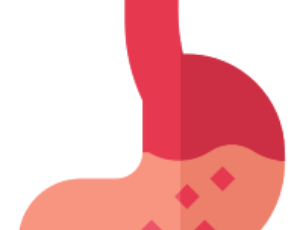
Advancements in Drug Delivery Systems for Natural Compounds Targeting Metabolic Disorders Associated with Inflammation
Roberto Sam, Sel Neal
The global incidence of metabolic disorders is on the rise, posing a significant challenge to public health. With remarkable advancements in diagnostic tools and clinical procedures, our understanding of the etiology and underlying pathophysiology of these disorders has expanded considerably. Furthermore, the utilization of in vitro and in vivo experimental models, preceding clinical investigations, has catalyzed numerous breakthroughs in biomedicine, particularly in the identification and development of potential drug candidates for the management of metabolic disorders.
Arch Gastroenterol Res, 2023, Volume Volume 4, Issue Issue 1, p24-35 | DOI: 10.33696/Gastroenterology.4.045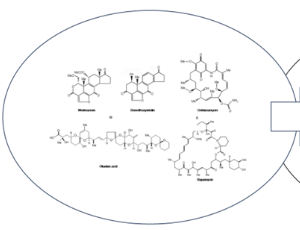
Prognostic Utility of Ferritin Transferrin Ratio in Hepatocellular Carcinoma
Ishaan Vohra, Pudasaini Garima, Bashar Attar, Prasanth Lingamaneni, Vatsala Katiyar, Hemant Mutneja, Krishna Rekha Moturi, Kapil Thapa Chhetri, Hassam Shah
There is growing body of literature to identify novel prognostic markers in hepatocellular carcinoma (HCC), including serum ferritin (SF), transferrin levels, alfa fetoprotein (AFP), and neutrophil to lymphocyte ratio (NLR). Chronic inflammation and fibrogenesis are considered quite essential in the oncogenesis of HCC. The trigger for this inflammation could range from viral hepatitis, alcoholic cirrhosis, to non-alcoholic fatty liver disease. Also, iron overload as in hereditary hemochromatosis is linked to one of the factors for HCC oncogenesis.
Arch Gastroenterol Res, 2020, Volume Volume 1, Issue Issue 2, p26-28 | DOI: 10.33696/Gastroenterology.1.006
Updates in the Treatment of Superficial Gastric Neoplasms by Endoscopic Submucosal Dissection
Josue Aliaga Ramos, Vitor N. Arantes
Gastric cancer is one of the neoplasms with the highest degree of mortality worldwide, responsible for more than 780,000 deaths in 2018 and whose incidence has been increasing over the last few years, mainly in Asian and Latin American countries. The technological imaging advances in digestive endoscopy such as virtual chromoendoscopy and magnification associated with a systematic and comprehensive endoscopic examination of the entire gastric mucosa by a trained operator have optimized the early detection of pre-malignant and malignant lesions, which have favoured the high rate of curability through the use of endoscopic resection techniques such as endoscopic submucosal dissection (ESD).
Arch Gastroenterol Res, 2021, Volume Volume 2, Issue Issue 1, p26-30 | DOI: 10.33696/Gastroenterology.2.023
Intraductal Tubular Adenoma: A Case Report and Diagnostic Algorithm for Intraductal Pancreatic Lesions
Shivali Desai, Christine MG Schammel, David Durantel, A Michael Devane, Steven D Trocha
Intraductal lesions of the pancreas are an increasingly recognized, radiologically detectable group of entities that require a systematic diagnostic approach to best define management given their variable prognoses. A case of isolated intraductal tubular adenoma (ITA) is reported with a comprehensive literature review; comparison of ITAs with intraductal papillary mucinous neoplasms (IPMNs) and intraductal tubular carcinomas (ITCs) is made with assessment of their distinctive imaging and histological findings and discussion of the evolution of these lesions’ classifications with regards to the established literature.
Arch Gastroenterol Res, 2022, Volume Volume 3, Issue Issue 1, p27-36 | DOI: 10.33696/Gastroenterology.3.040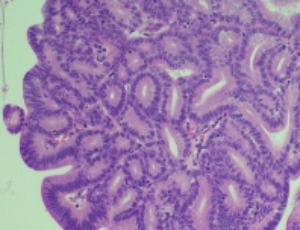
Evolution of Endoscopic Ampullectomy and Considerations for a Contemporary Approach
Luke Hourigan
Endoscopic ampullectomy (or endoscopic resection of lesions associated with the ampulla of Vater) has now been performed for more than 25 years and has been supported by the literature, however, since its inception, the efficacy of this approach is still somewhat underappreciated. In our recent publication, despite its high success rate for clearance of ampullary adenomas, even with quite an extensive lateral spreading tumour component (LST-P), we wished to re-iterate and even celebrate the value of endoscopic ampullectomy, discuss our technique, highlight the risk of post procedural haemorrhage
Arch Gastroenterol Res, 2020, Volume Volume 1, Issue Issue 2, p29-33 | DOI: 10.33696/Gastroenterology.1.007
Cholestatic Pruritus: Current Management Approach and Emerging Therapies – Mini Review
Vishwajit Kode, Kidist K. Yimam
Cholestatic Pruritus is a phenomenon that occurs in disease processes that impair bile flow. This condition poses significant challenges to quality of life and is often underdiagnosed and undertreated. While the direct cause of cholestatic pruritus remains unclear, it likely involves a complex interplay between multiple biochemical pathways. Due to recent advances in diagnostic tools, more biochemical pathways of cholestatic pruritis have been discovered.
Arch Gastroenterol Res, 2025, Volume Volume 6, Issue Issue 1, p30-34 | DOI: 10.33696/Gastroenterology.6.063
Importance of Autopsy from a Gastrointestinal Pathology Perspective: A Ten-year Review of 891 Autopsies
Ayesha S Siddique
There has been a decline in autopsy rates by 58% from 1972-2007. The major reason for this decline is the ability to diagnose diseases and disorders that result in mortality with greater accuracy. Additionally, the Joint Commission on Accreditation of Healthcare Organizations dropped the standard practice of requiring a 20-25% autopsy rate for in-hospital deaths. The perception or attitude towards autopsies from both family members and clinicians is changing leading to a further decrease in the autopsy numbers.
Arch Gastroenterol Res, 2021, Volume Volume 2, Issue Issue 1, p31-34 | DOI: 10.33696/Gastroenterology.2.024
Gastric Cancer: A Brief Review, from Risk Factors to Treatment
Beatriz Rocha Cuzzuol, Elise Santos Vieira, Glauber Rocha Lima Araújo, Jonathan Santos Apolonio, Lorena Sousa de Carvalho, Ronaldo Teixeira da Silva Junior, Breno Bittencourt de Brito, Fabrício Freire de Melo
Gastric cancer (GC), also known as stomach cancer, is a worldwide health problem. Anatomically, it can occur from the gastroesophageal junction to distal portions of the stomach. Considering both sexes, worldwide, it is the 5th most common neoplasm (5.7%) and the 3rd cause of mortality among malignancies, leading to approximately 782,000 deaths in 2018. The incidence varies geographically but 50% of new cases are diagnosed in developed countries. High incidence is observed in Asia, Latin America, and in the central and eastern parts of Europe. There are several ways to classify GC, but the most used is Lauren’s Classification, which proposes two main histological groups: intestinal and diffuse. This classification is important because there are marked etiological, pathological, and epidemiological differences between the subgroups, guiding the clinical approach for each patient.
Arch Gastroenterol Res, 2020, Volume Volume 1, Issue Issue 2, p34-39 | DOI: 10.33696/Gastroenterology.1.008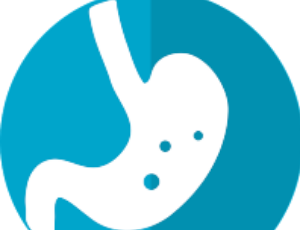
A Case Series of Rapid Resolution of Pediatric Eosinophilic Esophagitis with Dupilumab Treatment as Demonstrated by Sedation-Free Transnasal Esophagoscopy (TN-Eso)
Arsal Khan, Isabel N. O’Connell, Wayne G. Shreffler, Joel A. Friedlander, Qian Yuan
Eosinophilic esophagitis (EoE) is a chronic inflammatory disease of the esophagus. Dupilumab, a treatment for EoE, requires an initial endoscopic evaluation no sooner than 12 weeks after initiation. As it is costly and pediatric patients often experience fear and pain associated with the injection, this could lead to non-adherence or premature cessation of therapy. Here, we report a case series, as part of a larger ongoing study, in which subjects demonstrated an earlier response to dupilumab.
Arch Gastroenterol Res, 2025, Volume Volume 6, Issue Issue 1, p35-39 | DOI: 10.33696/Gastroenterology.6.064
Advances in Functionalized Hybrid Biopolymer Augmented Lipid-based Systems: A Spotlight on Their Role in Design of Gastro Retentive Delivery Systems
Pratap Basim, Shashank Gorityala, Mallesh Kurakula
Biopolymers have earmarked their importance in the biomedical and pharmaceutical applications. Researchers are still working for the facilitation of better therapeutic effects and medical benefits. In this context, several strategies are on a play like functionalization of biopolymers with physicochemical modification, functionalization of lipids with biopolymers, development of composites or hybrid systems for bringing together the benefits of individual moieties/systems
Arch Gastroenterol Res, 2021, Volume Volume 2, Issue Issue 1, p35-47 | DOI: 10.33696/Gastroenterology.2.025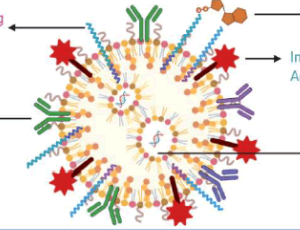
Blastocystosis and Urticaria: An Overview from a Syndemic Perspective
Luis Fonte Galindo, Yamilé Aleaga Santiesteban, María Ginori Gilke, Yosiel Molina, Yisel Hernández Barrios
Numerous studies have found an association between infection by some species of intestinal parasites and the development of urticarial lesions. In this document we have commented on the published findings that show the association between infection by Blastocystis spp. and urticaria, and on the theorizations in relation to the mechanisms that would explain it.
Arch Gastroenterol Res, 2023, Volume Volume 4, Issue Issue 1, p36-42 | DOI: 10.33696/Gastroenterology.4.046
Upregulation of Downstream Angiogenic Genes Using mRNA for the Transfection of Transcription Factor Hypoxia Inducible Factor 1 Alpha: A Short Communication
Mirza Farhana Iqbal Chowdhury, Farzad Mokhtari-Esbuie, Amid Yazdani, Jakub Wlodarczyk, Azadeh Nourmohammadi, Anjira S. Ambade, John M. Abraham, John W. Harmon
Hypoxia-inducible factor 1-alpha (HIF-1α) plays a critical role in regulating cellular responses to low oxygen levels. In our study, we transfected HIF-1α mRNA into human dermal fibroblasts and assessed its biological activity by measuring the upregulation of downstream angiogenic genes, aiming to investigate the delivery mechanism of HIF-1α mRNA and its functional impact. In this short communication, we will describe our transfection methodology, present the results we obtained, and discuss the potential implications of these findings for future therapeutic applications.
Arch Gastroenterol Res, 2025, Volume Volume 6, Issue Issue 1, p40-44 | DOI: 10.33696/Gastroenterology.6.065
Bouveret’s Syndrome: An Extensive Summary of the Literature
Karim T. Osman, Amr Wahba, Adel Farhoud, Ahmed Maher Abdelfattah, Daniel B.Maselli
Bouveret’s syndrome is a rare condition characterized by gastric outlet obstruction from an ectopic gallstone, facilitated by aberrant connection of the biliary and luminal gastrointestinal tracts. Establishing a diagnosis of Bouveret’s syndrome can be aided by clinical, radiologic, and endoscopic assessments and importantly relies on prompt diagnosis and management. Despite its rarity, the disease confers a high rate of morbidity and mortality.
Arch Gastroenterol Res, 2020, Volume Volume 1, Issue Issue 2, p40-46 | DOI: 10.33696/Gastroenterology.1.009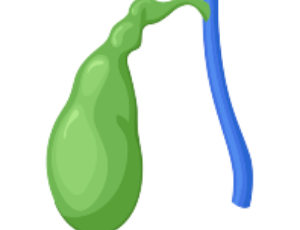
Obesity and Beyond: The Novel Technical Standard to Study the Small Bowel Microbiome
Daniel Brimberry, Gabriela Leite, Mark Pimentel, Gillian M Barlow, Ruchi Mathur
The small intestinal microbiome (SIM) is colonized by a variety of bacteria, archaea, viruses, and eukarya which contribute to the overall health of the human host. Commensal bacteria of the small intestine are crucial suppliers of essential nutrients, aid in the metabolism of indigestible carbohydrates, provide defenses against pathogenic bacteria, and are critical components of the mucosal architecture.
Arch Gastroenterol Res, 2024, Volume Volume 5, Issue Issue 1, p42-46 | DOI: 10.33696/Gastroenterology.5.053
Pediatric Functional Constipation in Clinical Practice: The Continuous Search for the Light at the End of the Tunnel
Nilton Carlos Machado, Juliana Tedesco Dias, Gabriela Nascimento Hercos, Thabata Koester Weber, Mary de Assis Carvalho
Functional constipation (FC) has a pooled world prevalence of 9.5%, a clear definition by Rome IV Criteria, and the NAPGHAN/ESPGHAN guidelines recommendation for management. With well-defined parameters, this commentary discusses the paths followed by the literature to implement different therapeutic modalities over time. The text will prioritize information based on systematic reviews, meta-analyses, or reviews.
Arch Gastroenterol Res, 2023, Volume Volume 4, Issue Issue 1, p43-51 | DOI: 10.33696/Gastroenterology.4.047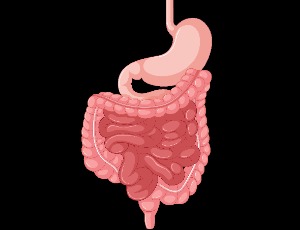
Multifaceted Strategies for Managing Gastroesophageal Reflux Disease: A Study of Pharmacological and Non-Pharmacological Interventions
Akhilesh Kumar Kuril
Gastroesophageal Reflux Disease (GERD) is a chronic condition characterized by the retrograde flow of gastric contents into the esophagus, leading to symptoms such as heartburn, regurgitation, and potential esophageal injury. The pathophysiology of GERD primarily involves dysfunction of the lower esophageal sphincter (LES), impaired esophageal clearance, delayed gastric emptying, and transient LES relaxations. Additional contributing factors include hiatal hernia and obesity. The pharmacological management of GERD focuses on acid suppression and includes the use of proton pump inhibitors (PPIs), H2-receptor antagonists, antacids, and prokinetic agents.
Arch Gastroenterol Res, 2025, Volume Volume 6, Issue Issue 1, p45-52 | DOI: 10.33696/Gastroenterology.6.066
Endoscopic Ultrasound-Guided Liver Biopsy, Is It Ready for Prime Time?
Neal Sharma, Ahmad H. Ali, Ghassan M. Hammoud
Liver biopsy continues to be the gold-standard with regards to diagnosis and staging of the majority of liver diseases. Serologic markers certainly have helped in diagnosing various autoimmune and viral-related liver diseases. Furthermore, laboratory testing and imaging studies such as liver elastography have allowed us to non-invasively assess fibrosis. Unfortunately, there are shortcomings with these forms of testing. False positives or laboratory errors will lead to misleading diagnoses. Situations can also arise during which there are diagnostic dilemmas, such as an obese patient with positive autoimmune serology and elevated liver chemistries.
Arch Gastroenterol Res, 2020, Volume Volume 1, Issue Issue 2, p47-51 | DOI: 10.33696/Gastroenterology.1.010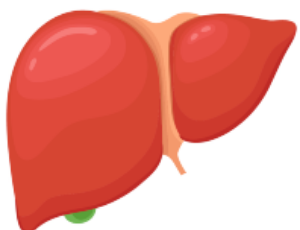
Translating Molecular Heterogeneity into Precision Medicine for Advanced Liver Disease
Tamer A. Addissouky
Background: Liver fibrosis arises from chronic hepatic injury and involves the accumulation of extracellular matrix proteins. Fibrosis progression ultimately leads to cirrhosis, characterized by architectural distortion and complications. Molecular profiling has identified prognostic transcriptomic subtypes, but management remains limited for advanced disease. Methods: We conducted a systematic review of the literature to identify recent advances in characterizing liver cirrhosis subtypes and emerging therapies.
Arch Gastroenterol Res, 2024, Volume Volume 5, Issue Issue 1, p47-58 | DOI: 10.33696/Gastroenterology.5.054
Pregnancy and Hepatitis B Immunization: A Commentary on Maternal Knowledge and Vertical Transmission Risks
Lolwa Al-Obaid, Rebecca Roediger, Mauricio Lisker-Melman
The paper Maternal knowledge of the risk of vertical transmission and offspring acquisition of hepatitis B, recently published in Annals of Hepatology, provides unique insight on a topic not previously studied in the USA. The research paper discusses important topics on maternal hepatitis B infections.
Arch Gastroenterol Res, 2021, Volume Volume 2, Issue Issue 2, p48-54 | DOI: 10.33696/Gastroenterology.2.026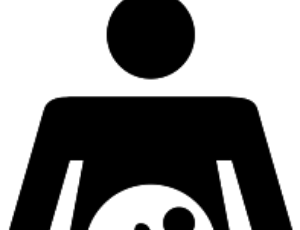
The Link of Nutrient Fluxes to Hepatic Insulin Resistance at Gene Expression
Yan Zhang, Guoxun Chen
Results of epidemiological studies show that obesity and type 2 diabetes mellitus have become a public health concern globally, which has substantial health, social and economic impacts. A common characteristic of human obesity and type 2 diabetes is insulin resistance, which a given amount of insulin produces less than normal physiological responses, usually demonstrated as diminished glucose lowering effect of insulin.
Arch Gastroenterol Res, 2020, Volume Volume 1, Issue Issue 3, p52-60 | DOI: 10.33696/Gastroenterology.1.011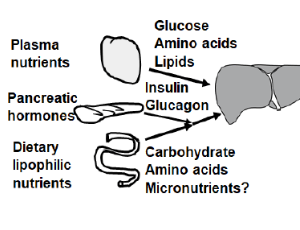
Liver Transplantation in an Adolescent Patient Post Extended Right Hepatectomy for Undifferentiated Sarcoma
Pablo Magaña-Mainero, Valeria Hernández-Luna, Isabela Almeida-Radomile, Miguel Charco-Cruz, Gerardo Alejandro Navarro-Toledo, Isidoro Aczel Sanchez-Cedillo, Carlos Wenceslao Florez-Zorrilla
Undifferentiated embryonal sarcoma of the liver (UESL) is an uncommon malignant neoplasm in the pediatric population, accounting for a small fraction of primary hepatic tumors but associated with an aggressive clinical course and poor prognosis. Surgical resection remains the mainstay of treatment; however, extended hepatectomy can leave patients with limited functional reserve and predispose them to hepatic failure, making liver transplantation (LT) a therapeutic alternative in selected cases.
Arch Gastroenterol Res, 2025, Volume Volume 6, Issue Issue 1, p53-56 | DOI: 10.33696/Gastroenterology.6.067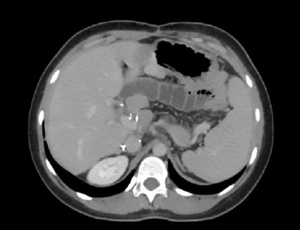
Viable but Nonculturable Gastrointestinal Bacteria and Their Resuscitation
Stephanie Göing, Kirsten Jung
Viable but nonculturable (VBNC) bacteria are deeply dormant phenotypic variants that are characterized by a loss of culturability in conventional culture media, yet retain some viability markers. Thus, low metabolic activity, nutrient uptake, membrane integrity, and respiration are all detectable in these dormant cells. In 1982, the VBNC state was first described for Escherichia coli and Vibrio cholerae. Shortly afterwards, VBNC Salmonella enteriditis were found to regain culturability
Arch Gastroenterol Res, 2021, Volume Volume 2, Issue Issue 2, p55-62 | DOI: 10.33696/Gastroenterology.2.027
A Dual Mechanism Hypothesis for Celiac Disease: Intraluminal Pressure-Induced Villous Compression and Nitrate-Driven Motility Impairment
Nebyu Negash Woldeamanuel
Celiac disease (CD) is an immune-mediated enteropathy triggered by gluten ingestion in genetically predisposed individuals, resulting in villous atrophy, crypt hyperplasia, and mucosal inflammation. While immunologic mechanisms are well characterized, the role of mechanical and biochemical factors in disease onset remains underexplored.
Arch Gastroenterol Res, 2025, Volume Volume 6, Issue Issue 1, p57-59 | DOI: 10.33696/Gastroenterology.6.068
Fecal Loading Evaluation by Two Radiological Scores: Comparisons between Functional Constipation and Irritable Bowel Syndrome-Constipation in Children and Adolescents
Gabriela Nascimento Hercos, Mary de Assis Carvalho, Juliana Tedesco Dias, Carine Dias Ferreira de Jesus, Nilton Carlos Machado
Compare fecal loading (FL) using Leech and Starreveld methods in children and adolescents with functional constipation (FC) or irritable bowel syndrome (IBS-C). Single-center, observational, retrospective, cross-sectional study of consecutive cases referred with unresponsive constipation. Inclusion criteria: FC and IBS-C, according to the Rome IV Criteria, age between 4 and 15 years old. Exclusion criteria: underlying chronic disorders, no medication during the two weeks preceding the radiography.
Arch Gastroenterol Res, 2024, Volume Volume 5, Issue Issue 1, p59-65 | DOI: 10.33696/Gastroenterology.5.055
Congenital Diaphragmatic Hernias: An Update on Management Strategies and Outcomes
Ashton Neo, Christopher Harris, Anne Greenough
Congenital diaphragmatic hernia (CDH) is a developmental defect of the diaphragm, occurring in approximately 1 in 3,000 live births with a high mortality rate of between 30 and 50%. This narrative review provides an update on antenatal and postnatal management strategies and current outcomes emphasizing where further research is required. Fetal endotracheal obstruction (FETO) has been demonstrated in a large RCT to improve survival in the most severe CDH and is now adopted into clinical practice.
Arch Gastroenterol Res, 2025, Volume Volume 6, Issue Issue 1, p60-77 | DOI: 10.33696/Gastroenterology.6.069
Intestinal Barrier Function – a Novel Target to modulate Diet-induced Metabolic Diseases
Siddhartha S Ghosh, Shobha Ghosh
High fat high cholesterol containing Western-type diet (WD)-induced obesity remains one of the major causes for the development of metabolic syndrome and associated metabolic diseases such as Type 2 Diabetes (T2DM) and atherosclerosis (that leads to cardiovascular diseases including heart disease and stroke). In addition to changes in lipid metabolism and excessive lipid accumulation, recent studies have also described direct effects of WD on gut microbiome and attributed dysbiosis of gut flora to the observed metabolic effects.
Arch Gastroenterol Res, 2020, Volume Volume 1, Issue Issue 3, p61-65 | DOI: 10.33696/Gastroenterology.1.012
Obeticholic Acid, FXR Agonists, Liver Disease and Plasma Biomarkers
Norman B. Javitt
How medications whose major biologic effect is to reduce bile acid synthesis favorably affect the course of a variety of cholestatic and metabolic liver diseases is not immediately apparent. Also, the most frequently used plasma biomarkers for evaluating benefit, alkaline phosphatase and conjugated bilirubin [1], provide different information. The former may be misleading with respect to the course of the disease and therefore it is important to focus on the pathophysiologic basis for its use.
Arch Gastroenterol Res, 2021, Volume Volume 2, Issue Issue 2, p63-67 | DOI: 10.33696/Gastroenterology.2.028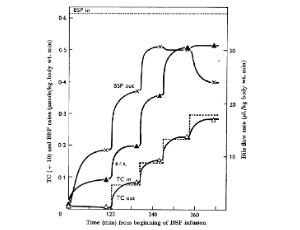
A Case of Spontaneous Rectal Perforation in a Constipated Elderly Patient
Vishal Bodh, Brij Sharma, Harmandeep Singh Thabal, Anshul Bhateja
An elderly male patient, aged 90 years, presented to the outpatient department of our institution with a documented history of constipation persisting for a span of twenty days, accompanied by bleeding per rectum exacerbated by straining. Notably, there were no alarming signs such as weight loss, loss of appetite, or anemia. The patient’s general and systemic examination yielded normal results, with laboratory parameters, including tumor markers such as serum CEA, within normal limits. Further evaluation through a proctoscopy examination revealed normal findings, following which the patient was prescribed laxatives and supportive treatments. However, the patient reported back following a few days with persistent symptoms including fever, chills, and rigors.
Arch Gastroenterol Res, 2024, Volume Volume 5, Issue Issue 1, p66-67 | DOI: 10.33696/Gastroenterology.5.056
The Consideration of Endometriosis in Women with Persistent Gastrointestinal Symptoms and a Novel Neuromusculoskeletal Treatment Approach
Allyson Augusta Shrikhande
Endometriosis is a chronic, hormone-dependent, inflammatory disease, characterized by the presence and growth of endometrial tissue outside the uterine cavity and it is associated with chronic pelvic pain and infertility. Worldwide, approximately 176 million women between the ages of 15 and 49 are affected by endometriosis. Endometriosis is a complex disease that induces a chronic inflammatory process and can be challenging to treat. Chronic pelvic pain syndrome (CPPS) is defined as pelvic pain lasting greater than three to six months that is not solely related to menstruation, sexual activity or bowel movements.
Arch Gastroenterol Res, 2020, Volume Volume 1, Issue Issue 3, p66-72 | DOI: 10.33696/Gastroenterology.1.013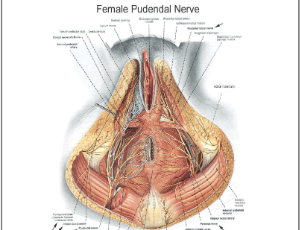
Intestinal Intussusception in Adults Due to Lipoma: Is Preoperative Diagnosis Possible. Case Report and Literature Review
Emily Rios, Flávio Silano, Ricardo Bandeira de Melo Amaral, Rodolfo Carvalho Santana, Paulo Cezar Galvão do Amaral
Intestinal intussusception in adults is quite rare, accounting for 1-5% of cases of intestinal semi-occlusion. The most frequent symptoms are nausea, vomiting and abdominal distension, as in any obstructive condition seen in the emergency room. Most cases of intestinal intussusception do not have a preoperative etiological diagnosis, due to difficulty in interpreting the radiological image. Case report of a 62-year-old male patient who was admitted to the emergency room at Hospital da Cidade in Salvador- Bahia- Brazil with semi-occlusion secondary to intestinal intussusception.
Arch Gastroenterol Res, 2024, Volume Volume 5, Issue Issue 1, p68-72 | DOI: 10.33696/Gastroenterology.5.057
Congenital Diaphragmatic Hernia: An Update on Management Strategies and Outcomes
Ourania Kaltsogianni, Theodore Dassios, Anne Greenough
Congenital diaphragmatic hernia (CDH) is a severe developmental anomaly with an estimated global prevalence at birth of about 2.3 in 10,000 live births. Despite recent advances in antenatal diagnosis, fetal interventions and postnatal management, the condition continues to have a high mortality due to pulmonary hypoplasia and pulmonary hypertension and affected infants can suffer long-term morbidity. In a prospective national population cohort study from the United Kingdom and Ireland,
Arch Gastroenterol Res, 2021, Volume Volume 2, Issue Issue 2, p68-73 | DOI: 10.33696/Gastroenterology.2.029
Paraduodenal Pancreatitis: Many faces of the Same Diagnostic Challenge
Giovanni Valentini, Monica Surace, Silvia Grosso, Annalisa Vernetto, Anna Maria Serra, Immacolata Andria, Dario Mazzucco
The term paraduodenal pancreatitis and groove pancreatitis are today used interchangeably, with all conditions having similar manifestations; they refer to an uncommon and still under-recognized form of recurrent or chronic pancreatitis that affects the so-called groove. The groove represents the potential space between the head of the pancreas, medially and the second part of the duodenum, laterally. It is bordered by the duodenal bulb and the third part of the duodenum in the superior and posteroinferior aspects, respectively.
Arch Gastroenterol Res, 2020, Volume Volume 1, Issue Issue 3, p73-82 | DOI: 10.33696/Gastroenterology.1.014
Treatment and Drug Resistance to Helicobacter Pylori: A Brief Review
Vinícius Lima de Souza Gonçalves, Jonathan Santos Apolonio, Ronaldo Teixeira da Silva Junior, Maria Luísa Cordeiro Santos, Beatriz Rocha Cuzzuol, Marcel Silva Luz, Fabian Fellipe Bueno Lemos, Hanna Santos Marques, Camilo Santana Silva, Mariana Miranda Sampaio, Bruna Teixeira da Costa, Fabrício Freire de Melo
Helicobacter pylori is a gram-negative, spiral-shaped bacterium that inhabits the gastric environment of 60.3% of the global population. Though most individuals infected with the bacterium remain asymptomatic, it is known that this infection plays a pivotal role in the development of diseases such as chronic gastritis, peptic ulcer, gastric cancer and gastric MALT lymphoma. Hence, eradication of H. pylori is associated with the potential prevention of many gastric and extra gastric diseases, such as gastric cancer.
Arch Gastroenterol Res, 2021, Volume Volume 2, Issue Issue 3, p75-78 | DOI: 10.33696/Gastroenterology.2.031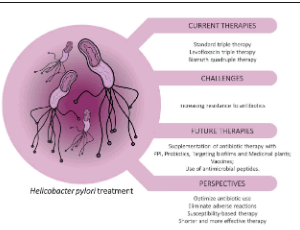
Endoscopic Palliation Therapy with Esophageal SEMS in a Case of Malignant Esophageal Stricture with Trachea-Esophageal Fistula
Aprajita Sharma, Anshul Bhateja
Esophageal cancer, a highly aggressive malignancy, frequently presents with advanced-stage dysphagia, significantly impacting patient quality of life. While surgical resection offers the best chance for cure in early stages, many patients are diagnosed with unresectable or metastatic disease, necessitating palliative interventions to alleviate symptoms.
Arch Gastroenterol Res, 2025, Volume Volume 6, Issue Issue 1, p78-80 | DOI: 10.33696/Gastroenterology.6.070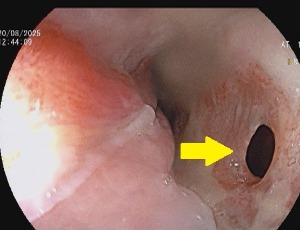
Creation of an Ex-vivo Transjugular Intrahepatic Portosystemic Shunt (TIPS) Training Model Using a Perfused Non-cirrhotic Porcine Liver
Jorge E Lopera, Ryan Bitar, John Walker, James Elliott, Katie Strychalski, Harrison Pollard, Annie Dang, Luis Garza, Carlos Ortiz, Matthew Parker, Matthew Z Taon, Partha Mandal, Barrett O’Donnell, Rajeev Suri, Ho-Young Song
Liver cirrhosis is growing problem worldwide with serious adverse clinical manifestations secondary to portal hypertension, including ascites, hydrothorax, bleeding from gastric and esophageal varices among others. Transjugular intrahepatic portosystemic shunt (TIPS) creation has demonstrated to be a very effective minimally invasive technique to treat portal hypertension largely supplanting surgical shunts. TIPS, however, is a highly technically demanding procedure with a steep learning curve.
Arch Gastroenterol Res, 2021, Volume Volume 2, Issue Issue 3, p79-85 | DOI: 10.33696/Gastroenterology.2.032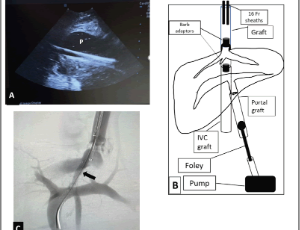
Pharmacologic Therapy with Niacin for Nonalcoholic Fatty Liver Disease (NAFLD): Emerging Evidence
Moti L. Kashyap, Shobha Ganji, Vaijinath S. Kamanna
In pharmacologic doses niacin (nicotinic acid) has been used clinically for over six decades for atherogenic dyslipidemia and reduction of cardiovascular event risk. In combination with statin therapy, it effects regression of coronary atherosclerosis. Emerging evidence indicates a new potential use for niacin for the treatment of NAFLD and its complications. Despite this enormous amount of data on niacin, there is confusion and misconceptions about its use of a drug rather than as a vitamin, its formulations, and how it can be used in clinical practice.
Arch Gastroenterol Res, 2020, Volume Volume 1, Issue Issue 3, p83-88 | DOI: 10.33696/Gastroenterology.1.015
Survival Disparity Between Antiviral-Treated and Antiviral-Naïve Patients Who Develop Their First HBV-Associated Hepatocellular Carcinoma
Daniel Garrido, Peter Block, Selena Lin, Dina Halegoua-DeMarzio, Hie-Won Hann
Hepatitis B virus (HBV) infection is a public health problem, accounting for more than 257 million cases of chronic infection and a major cause of hepatocellular carcinoma (HCC) worldwide. With the vaccination and the advent of nucleos(t)ide analogues (NAs) as antiviral therapy, chronic HBV infection currently accounts for approximately 50% of HCC cases worldwide, a significant decrease from >80% in the 1980’s. The reduced incidence of HBV-related HCC (HBV-HCC) with NAs with lamivudine, entecavir, and tenofovir disoproxil fumarate is well documented.
Arch Gastroenterol Res, 2021, Volume Volume 2, Issue Issue 3, p86-94 | DOI: 10.33696/Gastroenterology.2.033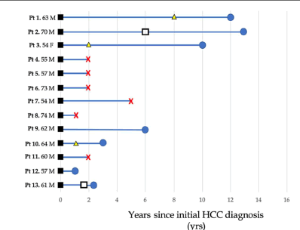
Food Protein-induced Allergic Proctocolitis with Breastfeeding or Formula Feeding at Symptoms Onset—A Ten-Year Experience at a Single Tertiary Center
Juliana Tedesco Dias, Mary Assis Carvalho, Gabriela Nascimento Hercos, Carine Dias Ferreira de Jesus, Thabata Koester Weber, Nilton Carlos Machado
Aim: This study evaluates the sociodemographic, clinical, and anthropometric data of infants diagnosed with Food Protein-Induced Allergic Proctocolitis (FPIAP), categorized as exclusively breastfeeding or formula feeding at the onset of symptoms. This division allows us to compare the effects of different feeding on the development of FPIAP. Methods: This retrospective, observational, single-center study included infants ≤36 months diagnosed with FPIAP. Exclusion criteria were chronic morbidities to ensure a focused study population.
Arch Gastroenterol Res, 2025, Volume Volume 6, Issue Issue 1, p86-94 | DOI: 10.33696/Gastroenterology.6.072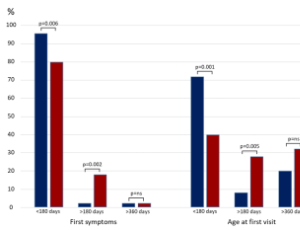
The Dual Role of Macrophages during Hepatitis B Infection
Suzanne Faure-Dupuy, Julie Lucifora, David Durantel
Hepatitis B virus (HBV) chronically infects more than 250 million individuals worldwide and is responsible for more than 800,000 deaths per year by promoting end-stage liver diseases, among which decompensated cirrhosis and hepatocellular carcinoma (HCC) (WHO, July 2020) are prominent. Studies performed in chimpanzees or in animalversion of HBV (woodchuck HBV: WHBV) highlighted the lack of immune responses against the virus upon primary infection.
Arch Gastroenterol Res, 2020, Volume Volume 1, Issue Issue 4, p89-94 | DOI: 10.33696/Gastroenterology.1.016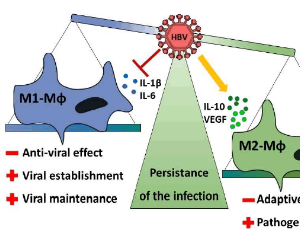
Females with Autoimmune Liver Diseases are at Increased Risk of Major Adverse Cardiovascular Outcomes: A Nationwide Matched Cohort Study
Joy Zhao, Tammy Tran, Dina Halegoua-DeMarzio, Rachel Redfield
Cardiovascular disease (CVD) remains a leading cause of death in women. Atherosclerotic Cardiovascular Disease score does not encompass inflammatory diseases, which is associated with increased CVD risk. This score may underestimate risk in women with autoimmune liver diseases (AILD) such as autoimmune hepatitis (AIH), primary biliary cholangitis (PBC), and primary sclerosing cholangitis (PSC). We investigated if women with AILD had increased CVD risk compared to female and male controls.
Arch Gastroenterol Res, Volume 6, Issue 1, p95-100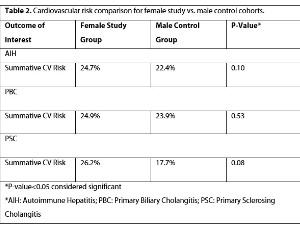
The Inappropriate Use of Proton Pump Inhibitors: An Internal Medicine Residency Clinics Effort to Deprescribe
Polina Gaisinskaya, Zed Seedat, Sanja Patino, Navneet Kaur, Oscar L. Hernandez, Eric Abkian, Jamie Fabricant, Mishah Azhar, Michael A. DeDonno, Nabil Benhayoun
Since 1989, PPIs have become among the top-selling drug classes in the country. It is estimated that in the United States alone, about a quarter of the country suffers from acid related conditions. Their versatility and popularity have prompted the World Health Organization to add PPIs to their list of essential medications. The low cost of PPIs and over the counter (OTC) availability of these medications have made their use ubiquitous in outpatient care.
Arch Gastroenterol Res, 2021, Volume Volume 2, Issue Issue 3, p95-101 | DOI: 10.33696/Gastroenterology.2.034
Refractory Gastro-oesophageal Reflux Disease and Laryngopharyngeal Reflux - Use the Bottom up Approach
Scott B. Simpson
The pathophysiology of typical gastro-oesophageal reflux disease (GORD) symptoms and reflux oesophagitis is associated with excess acid reflux, but both refractory GORD and laryngopharyngeal reflux (LPR) have strong links with functional gut disorders. Oesophageal pH impedance monitoring, our accepted gold standard for diagnosing GORD, has significant shortcomings when assessing proximal oesophageal and in particular pharyngeal reflux. In addition, identifying potential contamination of other parts of the respiratory tract such as lungs or sinuses is not possible.
Arch Gastroenterol Res, 2020, Volume Volume 1, Issue Issue 4, p95-104 | DOI: 10.33696/Gastroenterology.1.017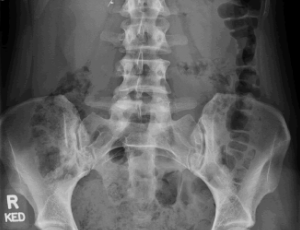
Extragastric Manifestations of Helicobacter pylori Infection: A Commentary
Camilo Santana Silva, Ronaldo Teixeira da Silva Junior, Luana Kauany de Sá Santos, Jonathan Santos Apolonio, Bruna Teixeira da Costa, Beatriz Rocha Cuzzuol, Marcel Silva Luz, Fabrício Freire de Melo
Helicobacter pylori (Hp) is characterized as a gram-negative bacterium with microaerophilic metabolism, flagellated and helix-shaped that affects approximately 50% of the world population and, in some regions, this rate can exceed 80%. Hp infection is well known to infect the epithelial tissue of the stomach, being involved with development of many stomach diseases, including gastric carcinoma.
Arch Gastroenterol Res, 2021, Volume Volume 2, Issue Issue 3, p102-109 | DOI: 10.33696/Gastroenterology.2.035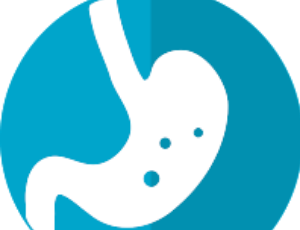
Are We Close to Achieving a HBV Cure? Risk for Hepatocellular Carcinoma Persists Despite Long-term HBV Suppression: An Update on Our Experience
Tina Boortalary, Brianna J Shinn, Robert M Coben, Mitchell I Conn, Jorge Prieto, Howard Kroop, Anthony J DiMarino, Hie-Won Hann
Since the discovery of the hepatitis B virus (HBV) by Blumberg et al., great progress has been made in understanding the pathogenesis of the virus and its role in hepatocellular carcinoma (HCC). It is estimated that hepatitis B is responsible for about 50% of the HCC cases worldwide. Because of geographic variations in HBV incidence, the burden of HBV-related HCC (HBV-HCC) is highest in endemic areas such as Asian-Pacific and sub- Saharan Africa and lowest in the United States and the West.
Arch Gastroenterol Res, 2020, Volume Volume 1, Issue Issue 4, p105-110 | DOI: 10.33696/Gastroenterology.1.018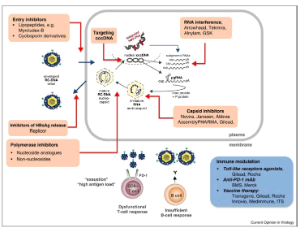
Fatty Liver and Hepatocellular Carcinoma
Francesco Giuseppe Foschi, Lucia Napoli, Giorgio Bedogni
Fatty liver (FL) is the most common wide-world liver disease that is nowadays demonstrating an increasing prevalence trend. In sharp contrast, the most common causes of liver diseases, such as viral causes, are decreasing thanks to advances in antiviral therapies. Non-alcoholic fatty liver disease (NAFLD) is characterized by hepatic fat accumulation, often associated with insulin resistance (IR), and defined by the presence of steatosis in at least 5% of hepatocytes in absence of relevant alcohol intake.
Arch Gastroenterol Res, 2020, Volume Volume 1, Issue Issue 4, p111-116 | DOI: 10.33696/Gastroenterology.1.019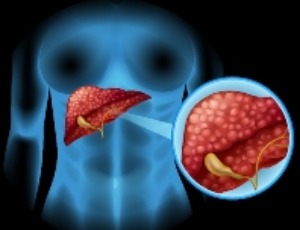
Conversion Surgery for Hepatocellular Carcinoma Treated with Lenvatinb
Nobutaka Sato, Toru Beppu, Eri Oda, Kensuke Yamamura, Shinichi Akahoshi
Multidisciplinary treatment is widely applied for advanced hepatocellular carcinoma (HCC). Systemic therapy is recommended and can provide a modest prognosis for HCC in Barcelona Clinic Liver Cancer staging C. Lenvatinib is a newly developed multityrosine kinase inhibitor and has become a more preferred targeted drug than sorafenib to achieve conversion surgery due to its higher tumor necrosis effect.
Arch Gastroenterol Res, 2020, Volume Volume 1, Issue Issue 4, p117-123 | DOI: 10.33696/Gastroenterology.1.020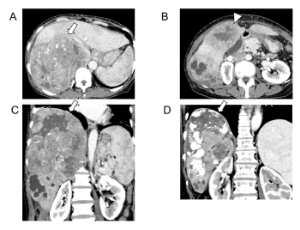
About Scientific Archives
Scientific Archives is a global publisher initiated with the mission of ensuring equal opportunity for accessing science to research community all over the world. Spreading research findings with great relevance to all channels without any barrier is our goal. We want to overcome the challenges of Open Access with ensured quality and transparency.
